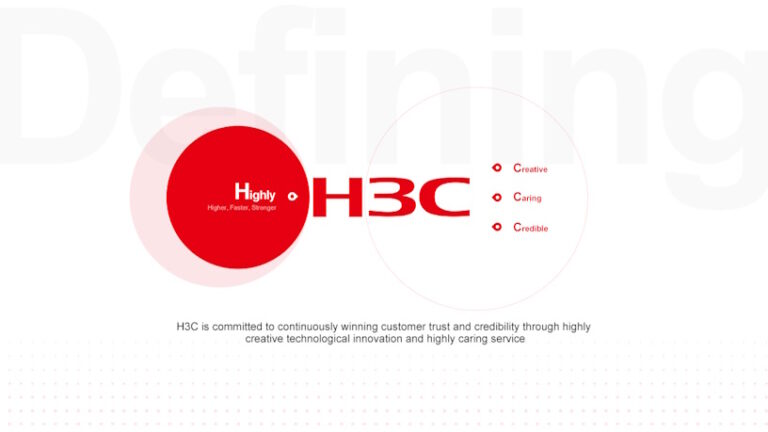Starting your first job is a big deal. It comes with new responsibilities, formative learning curves, a regular paycheque, and, unfortunately – tax. Geo Kilian, tax attorney at Hobbs Sinclair Advisory, lays out the tax basics you need to know as you kick off your career.
When we recently welcomed a new group of first-year employees to the company, a key insight struck me: so many of us stepping into the workforce for the first time have the same questions buzzing in our heads: What do I need to know about tax? When do I start paying tax? How does tax even work?
If you’re about to set sail on the ship of taxable income – whether you’re a recent graduate, a student earning some cash on the side, or just curious about what you need to know about income tax in South Africa – this beginner’s guide to paying tax is for you.
When do I need to register for tax?
 Once you start earning an income, tax becomes a part of life – but not always right away. In South Africa, you are generally required to register as a taxpayer with SARS (South African Revenue Service) if your taxable income exceeds the annual tax threshold. For the 2025 tax year, this threshold is at R95 750 for those under 65. This figure changes annually, so it’s always a good idea to confirm the latest details on the SARS website.
Once you start earning an income, tax becomes a part of life – but not always right away. In South Africa, you are generally required to register as a taxpayer with SARS (South African Revenue Service) if your taxable income exceeds the annual tax threshold. For the 2025 tax year, this threshold is at R95 750 for those under 65. This figure changes annually, so it’s always a good idea to confirm the latest details on the SARS website.
If you’ve recently graduated and landed your first job, your employer will usually handle your PAYE (Pay As You Earn) tax registration, deducting the tax directly from your salary.
However, if you’re freelancing or completing internships without PAYE, or earning from other sources (like a side hustle), the responsibility to register falls on you.
The good news is that it is a straightforward process. You can easily register on the SARS eFiling platform, or you can visit a local branch with your ID, proof of address, and bank details.
Pro tip: Don’t wait too long to register – late registration can mean penalties if you owe tax.
Do I pay tax on money my family gives me?
If your parents, family or even close friends are helping you out financially – say, covering rent or giving you a cash boost while you settle into your first job – relax: this is not considered taxable income. In South Africa, gifts or personal support from relatives or those close to you fall under the donations tax rules. The recipient doesn’t pay tax, although the donor might, if their donation exceeds the annual limit of R100 000.
So, if Mom sends you R5 000 a month, you’re in the clear. But if you invest that money and earn interest or profits, that income could become taxable. To avoid complications, it’s wise to keep clear records distinguishing gifts from earned income, in case SARS requires clarification.
How do I claim medical contributions?
Medical expenses can help lower your tax liability if handled correctly. If you’re on a medical aid scheme and you are the main member of that scheme (maybe through your new job), you can claim a medical tax credit. For 2025, this is R364 per month for the main member, R364 for the first dependent, and R245 for each additional dependent (figures are subject to annual adjustments, so always check the SARS website for updates). These credits reduce your tax bill directly.
To claim the medical tax credit, you’ll need to file a tax return via eFiling once tax season opens (usually in July). Your employer’s IRP5 certificate or your medical aid’s tax certificate will provide the necessary details regarding your contributions; just upload these when prompted.
Bonus tip: If you’ve had significant out-of-pocket medical expenses, like glasses or a hospital stay, you might be eligible to claim additional deductions, but only if they exceed 7.5% of your taxable income for individuals below 65 years old. So, it’s worth consulting a tax expert if this might apply to you.
What about interest earned as a student?
If you’re a student with savings that are earning interest, here’s how it works: you get an interest exemption of R23 800 if you are under 65, or R34 500 if you are over 65. (Remember to confirm the latest figures on SARS’s website).
Say you earned R30 000 interest over the tax year. Subtract the exemption from the amount of interest you earned (R30 000 minus R23 800), and the result (R6 200) is taxable. If you earned additional income – say R10 000 – from a holiday job, your total income would be R40 000. After applying the exemption, your taxable income would be R16 200 (R40 000 minus R23 800).
However, you only owe tax if your total yearly income exceeds the estimated tax threshold of R95 750 (2025 estimate). Here, R40 000 is below that, so you don’t have to pay any tax yet.
But if your income were to increase, then you could become liable to pay tax. So if you are earning interest on savings, you should register on eFiling to report that interest. Banks do provide SARS with your earned interest, so it’s crucial to stay transparent!
What is eFiling, and how do I use it?
Your go-to platform for managing your taxes online is called eFiling. It’s where you can submit tax returns, check for refunds, or confirm if you owe any money to SARS (or if SARS owes you money). There’s no need to queue at a SARS branch!
Getting started is simple: visit the SARS eFiling website, click “Register,” and provide your ID number, email, and some personal details. SARS will verify your account, sometimes by phone or OTP.
Once registered, you’ll submit an ITR12 form each year. This form summarises your income, deductions, and tax credits. Your employer will submit an IRP5 (a document showing your salary and PAYE deductions) to SARS and supply you with a copy.
Tax season typically runs from July to November for salaried individuals, and eFiling offers a step-by-step guide through the whole process. If it’s your first time, consider watching a tutorial or asking a friend for help. Once you’ve done it, it’s surprisingly straightforward.
What does ‘assessment’ or ‘self-assessment’ mean?
After you submit your tax return, SARS “assesses” it by reviewing your calculations to determine if you’ve underpaid or whether you qualify for a refund.
For most new employees, this is automatic: your PAYE contributions already cover most of your tax liability, and eFiling simply confirms it. In some cases, you might receive a refund if too much tax was deducted, or you could owe more if there’s a shortfall.
“Self-assessment,” on the other hand, applies if you’re not on PAYE – for instance, if you’re a freelancer or have extra income such as interest from savings. In these scenarios, you calculate your own tax and submit it via eFiling, often with provisional tax payments twice a year (August and February).
Once SARS completes the assessment, they’ll issue an ITA34 notice, called an Original Assessment, summarising the outcome. Be sure to keep it as proof of your tax status – it indicates whether you owe more tax or are due a refund.
Paying tax is certainly not be the most thrilling part of starting your first job, but it doesn’t have to be daunting. From registering with SARS to figuring out eFiling, it’s all about staying on top of what you earn and what you can claim.
My top tips? Create your eFiling profile sooner rather than later, track all sources of income (even gifts or interest), and don’t hesitate to seek help. SARS has a helpline, and there are plenty of free resources online. As you settle into work, mastering these basics will keep you on the right side of our tax laws, stress-free and financially savvy.
Welcome to the workforce – tax and all!
This post was based on a press release issued on behalf of Hobbs Sinclair Advisory.
 In this discussion Bryan and Johann explain what you need to know about your employee benefits and the questions you should be asking your employer and financial adviser.
In this discussion Bryan and Johann explain what you need to know about your employee benefits and the questions you should be asking your employer and financial adviser.

 The scam is positioned as a high-return, AI-powered investment opportunity and seems to be driven by a well-coordinated syndicate. The syndicate has already targeted several major financial institutions with this scam.
The scam is positioned as a high-return, AI-powered investment opportunity and seems to be driven by a well-coordinated syndicate. The syndicate has already targeted several major financial institutions with this scam. Once you start earning an income, tax becomes a part of life – but not always right away. In South Africa, you are generally required to register as a taxpayer with SARS (South African Revenue Service) if your taxable income exceeds the annual tax threshold. For the 2025 tax year, this threshold is at R95 750 for those under 65. This figure changes annually, so it’s always a good idea to
Once you start earning an income, tax becomes a part of life – but not always right away. In South Africa, you are generally required to register as a taxpayer with SARS (South African Revenue Service) if your taxable income exceeds the annual tax threshold. For the 2025 tax year, this threshold is at R95 750 for those under 65. This figure changes annually, so it’s always a good idea to  The GEPF uses the November year-on-year price changes to determine the pension increases. It just happened that in 2024, the November year-on-year CPI rate was 2.9%. Yet in June the increase in inflation was 5.1% year-on-year.
The GEPF uses the November year-on-year price changes to determine the pension increases. It just happened that in 2024, the November year-on-year CPI rate was 2.9%. Yet in June the increase in inflation was 5.1% year-on-year.
 With so many South Africans travelling abroad, there is often confusion surrounding what they can and cannot do when utilising their local banking facilities abroad.
With so many South Africans travelling abroad, there is often confusion surrounding what they can and cannot do when utilising their local banking facilities abroad.



